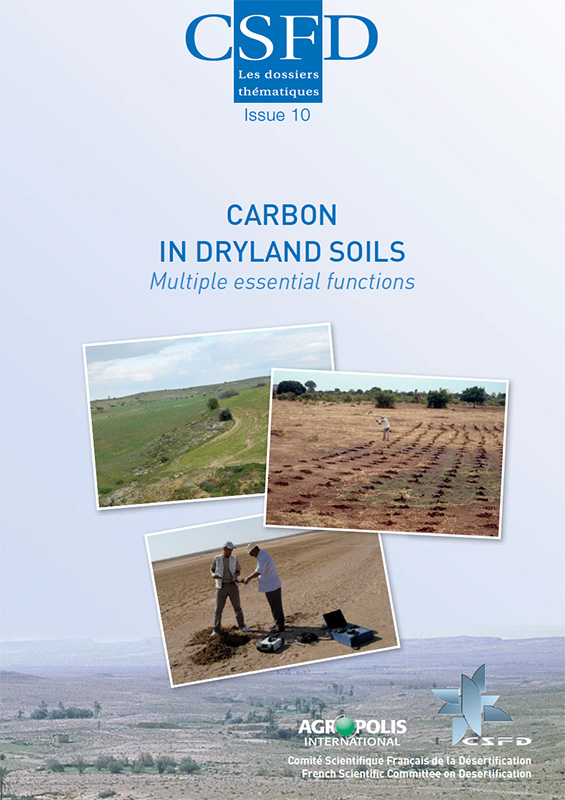Multiple essential functions
Soil organic carbon (SOC) has a key role in the overall behaviour of soils and agroecosystems. Increasing its content enhances soil quality and fertility, thus improving agricultural resilience and sustainability and, in turn, food security of societies. Soils also contain the largest pool of carbon interacting with the atmosphere. Agricultural and forestry systems that reduce atmospheric carbon concentrations by sequestering this carbon in biomass and in soil organic matter are carbon sinks. Combating desertification contributes to soil carbon sequestration, thus mitigating global warming, while contributing to sustainable agricultural management.
Soils have only recently become a global environmental issue, especially in the framework of three international environmental conventions. These conventions have interrelated issues, especially with respect to dryland regions—desertification, climate change and biodiversity loss. Few tangible policies have, however, been drawn up concerning carbon in dryland regions. The impact of agricultural, pastoral and forestry activities on the carbon cycle need especially to be taken into greater account.
In the current carbon market system, carbon volumes of agricultural and forestry sectors are low as compared to those of other sectors (industry, etc.). Moreover, these markets do not fully recognize all activities that are conducive to carbon sequestration in agricultural soils, particularly in drylands. Carbon markets have so far been focused on checking amounts of carbon sequestered, whereas it would be much easier, and verifiable, to directly promote recognized ‘carbon sequestering’ practices. Such a market could provide much more efficient operational leverage for modifying agricultural practices and setting up systems to protect soils in dryland regions.





